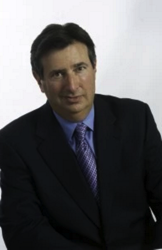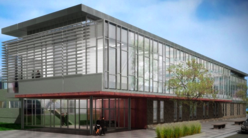
English-speaking universities continue to dominate the world, according to a new ranking from the Times Higher Education supplement released Thursday.
Of the top 24, 16 were American and six were British.

Construction on the Universities at Shady Grove’s new biomedical sciences and engineering building is scheduled to begin this fall after local leaders persuaded Gov. Larry Hogan to reinstate funding for the project during this year’s General Assembly session.

The Information Technology (IT) Manager will develop, assess and maintain secure, effective and innovative information technology functions at BHI. The IT Manager influences the BHI organization by strategically managing and providing information, intelligence and insights which influence BHI operations decisions and promote the image of the organization.

The biohealth industry in Maryland, Virginia and DC needs a strong identity and brand that will help it grow and attract the best talent in the world. At a regional conference on April 18, the community announced a new name and tagline, along with a wordmark:
To complete the logo, an icon is needed that captures the spirit of the industry and the region.
A competition is underway for the icon design. Anyone from an organization (college, company, PR firm, etc.) based in Maryland, Virginia or DC may submit an entry. The deadline for submissions is May 31, 2016. The winner will receive $5,000.

Wednesday, May 11, 2016 5:30 PM - 8:30 PM
Our annual Industry Awards Celebration recognizes the leaders and innovators in the technology and life science communities from Maryland and the surrounding regions. The evening brings over 900 technology, life science, government, academia, and supporting businesses together at one place, at one time for Maryland's best night of networking.

Harbor Designs and Manufacturing (HDM) will hold a ribbon cutting ceremony at Tuesday, May 17th to mark the opening of its new 45,000 sq. ft. engineering and manufacturing facility in the heart of a Baltimore City Economic Empowerment Zone. The new HDM facility is dedicated to the production and engineering of cutting-edge technologies built with local labor. Link to the invite.

And the Winners are…
Innovation
- Cobrain
- MFFire
- Sisu Global Health
Corporate Excellence
Entrepreneur
- Jess Gartner CEO and Founder, Allovue
Please join TEDCO at our annual ICE Awards, as we honor some of our "coolest" portfolio companies and recognize the best and brightest that are developing cutting-edge technologies and enriching our community.
Meet with 20 of TEDCO's recently funded startup companies that will be exhibiting.
Network with the hottest tech startups, investors and entrepreneurship community in Maryland.

Baltimore was a major site in the effort to develop an Ebola vaccine. Two years later, a leading Johns Hopkins researcher is looking to apply a major discovery to the Zika virus.
J. Thomas August, a JHU pharmacology and molecular sciences professor, formed Pharos Biologicals in December. The company received a license to develop DNA vaccine technology called the LAMP for influenza and flaviviruses from the Johns Hopkins School of Medicine.

GlaxoSmithKline CEO Andrew Witty attributes the company's success to sticking to the tried-and-true business model of investing in research and development and not transitioning to an acquisition model.
Witty told CNBC's "Closing Bell" on Monday that the key is to be patient and to see the value of investing in innovation.

As we await the decision from the National Institutes of Health (NIH) on the petition backed by Senator Bernie Sanders (D-VT) and others urging that the march in provision of the Bayh-Dole Act be used to control drug prices, it’s worthwhile to recall the time the agency followed similar advice. That resulted in a smack down by Congress and the courts after a band of universities, an innovative small company and a conscientious federal employee refused to be bullied, altering the course of government.

Thursday, May 26, 2016
Please join us for the award ceremony where we announce the three winners of the Innovation into Action Challenge—a new initiative to support innovations with the potential to make a difference in the lives of people in emerging nations. At stake is a tailored package of support designed to accelerate the winning innovations’ deployment in the field, including $100,000 in funding, market testing on DAI’s overseas projects, access to a network of accelerator professionals, and technical mentoring to refine the innovator’s pitch, product, or service.

This week, MdBioLab was featured on ABC7 (WJLA) and Montgomery Community Media (MCM). In the ABC7 piece, MdBioLab was on location at Dr. Henry A. Wise Jr. High School in Upper Marlboro. Students were engaged in one of MdBioLab’s more popular activities, Mystery of the Crooked Cell in which they learn how to diagnose sickle cell disease at the molecular level. Working to achieve MdBio Foundation's mission, MdBioLab brought the students access to laboratory equipment that many had never used before.

Speaking at the annual Health Datapalooza conference today, Department of Health and Human Services (HHS) Secretary Sylvia M. Burwell announced a challenge to encourage health care organizations, designers, developers, digital tech companies and other innovators to design a medical bill that’s simpler, cleaner, and easier for patients to understand, and to improve patients’ experience of the overall medical billing process. The "A Bill You Can Understand" design and innovation challenge is intended to solicit new approaches and draw national attention to a common complaint with the health care system: that medical billing is a source of confusion for patients and families.

As I take part in panel discussions on the investor’s perspective on startup financing and growth, it strikes me how formulaic these events tend to be. A group of investors provides insight to a room full of rapt entrepreneur attendees. Sometimes the entrepreneurs get to ask questions, and sometimes they don’t.

A new accelerator devoted to agricultural technology startups is launching in Research Triangle Park with $11.5 million in initial funding.
The AgTech Accelerator, which officially opened for business Thursday, anticipates raising a total of $25 million to $30 million from investors by the end of this year, said John Dombrosky, a former Syngenta executive who is CEO of the new venture.

Two biotech companies in the United States have been given the green light to see if it is possible to regenerate the brains of dead people. © Shutterstock Bioquark Inc., in collaboration with Revita Life Sciences, has been given ethical permission by US health authorities to recruit 20 patients who have been declared clinically dead from a traumatic brain injury to test whether parts of their central nervous system (CNS) can be brought back to life.

Investment firm Heritage Group has closed its second innovation fund and now counts 15 healthcare organizations as limited partners.
The $220 million fund is the latest example of how health systems and other industry players are taking an active role in piloting, investing in and mentoring young digital health companies as technology continues to reshape healthcare delivery. It is among the largest pools of funds for healthcare technology investments, and the combined approach allows the group to make larger investments in later-stage companies than they might otherwise do on their own.

Under the leadership of Prime Minister Narendra Modi, the Indian government has shown that it understands the need to develop innovation in the country’s health care sector.

Lita Nelsen is one of the most influential power brokers in the drug industry — and yet there’s a good chance you’ve never heard of her.
That’s because she ran one of the country’s largest and most successful technology transfer offices, an unglamorous yet essential go-between for universities and startups. And any time a venture capitalist, a pharmaceutical company, or a tech titan wanted to cash in on an invention at the Massachusetts Institute of Technology, each had to go through her.

Orthopedic surgeons are relying more and more on 3-D printing to build replacements for their patients’ defective or worn out bones.
This year surgeons around the world will implant tens of thousands of 3-D printed replacements parts for hips, knees, ankles, parts of the spine, and even sections of the skull.